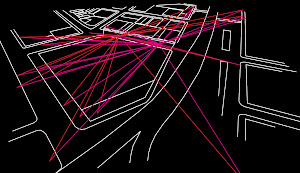In his 2002 essay, Digital Lifestyles and the Future City, Andrew Gillespie, head of Newcastle University’s School of Geography, Politics and Sociology commented on urban planning’s relationship to a city of the digital age. He said: “We are left to conclude that planners have yet to develop the awareness, let alone the expertise or appropriate policy intervention mechanisms that would enable them to influence the spatial development of a digital society. Somebody might be “planning” the future digital city – the telecommunications companies perhaps? – but it certainly doesn’t seem to be planners!”
Professor Gillespie’s comment touches on a number of issues relevant to the state of urban planning in the “digital” age at the current turn of the century. Planning, as a pluralist enterprise during the last 20 years, has evolved into a profession that deals largely with issues of facilitation, social justice, community involvement, and negotiation. With the exception of the use of geographic information systems, basic CAD packages, and transportation simulations, planning has been rather disconnected from the evolving world of digital technology. As such, innovations in computing, engagement with the growth of situated sensing technologies, and use of innovative environmental models have remained largely untouched by planners.
Now, as digital technologies, ubiquitous computing, and pervasive information are redefining our social, political, and economic spaces in an unprecedented way, planning can no longer avoid the potent forces of the endogenous information age. If planning is to remain engaged with community discourses in communities that are now utterly digital, planning will inevitably come to terms with digital technology. The question is how?
Parametricism, alluding to the use of parametric softwares for digital design, is one such technology that is creeping ever closer to the field of urban planning. For the past 15 years, parametric design has been used as both an avant-garde form generator and construction administration management system in the field of architecture. This is due to its remarkable ability to associatively model every aspect of any designed system, connecting external, environmental data with live models and enabling geometric variability through parametric updatability and associative rules. This technology has slowly grown into a movement, a style, and has recently been witnessed as a growing force in urban design through a number of master planning competitions and a wealth of academic research and experimentation. Very soon, the world could see its very first Parametricist city.
Given this momentum, Parametricism may follow in the historic footsteps of modernism, where a universal style translated into a universal ideal of the city, creating cities and plans that are notorious to this day. If this happens, urban planning may be caught off guard, as a wave of Parametricist cities sprout up absent of engagement with the social, economic, and political contingencies that urban planning is expert in negotiating with the built environment. Parametricism must be investigated critically from the point of view of urban planning so that its potential role in the profession can be better understood. This is the purpose of this research proposal.


